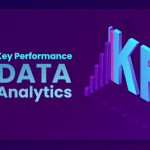The technological landscape has witnessed a remarkable evolution, especially in monitoring tools. These tools, integral to managing and maintaining the health of IT systems, have undergone significant changes, adapting to the ever-expanding complexities of modern technology infrastructure. This article explores this evolution, tracing the journey from basic monitoring setups to sophisticated, AI-driven systems.
The Early Days: Simple Systems and Limited Metrics
In the initial phases, monitoring tools were relatively rudimentary, primarily focusing on basic metrics like server uptime and CPU usage. These tools provided a fundamental level of insight, allowing IT professionals to react to issues rather than anticipate them. The primary challenge was the lack of comprehensive data, limiting the ability to make informed decisions. See here for a deeper understanding of these limitations and how they were addressed.
Emergence of Advanced Monitoring: Comprehensive Data and Predictive Analysis
The need for more advanced monitoring tools became evident as technology infrastructures grew in complexity. These tools began offering more than just basic metrics; they provided comprehensive insights into system performance, network traffic, and application health. The shift towards predictive analysis marked a significant milestone. By employing sophisticated algorithms, these tools could predict potential issues before they become critical, enabling proactive management of IT environments.
Integration of AI and Machine Learning: A New Era of Smart Monitoring
Integrating Artificial Intelligence (AI) and Machine Learning (ML) has propelled monitoring tools into a new era. These advanced systems can analyze vast amounts of data, learn from patterns, and make intelligent predictions about future system behavior. This evolution represents a leap from reactive to proactive and predictive monitoring, significantly reducing downtime and improving overall system efficiency.
The Role of Cloud Computing and Hybrid Environments
Cloud computing has been a game-changer in the world of monitoring tools. The shift to cloud-based and hybrid environments necessitated tools that could seamlessly monitor both on-premises and cloud infrastructure. This era saw the development of monitoring solutions that provided unified views across diverse IT landscapes, offering crucial insights into multi-cloud and hybrid environments.
Challenges and Considerations: Ensuring Effective Monitoring
Despite these advancements, implementing effective monitoring strategies comes with its challenges. For instance, the sheer volume of data generated by modern IT systems can be overwhelming, and sifting through this data to extract meaningful insights requires sophisticated analysis tools. Additionally, ensuring data security and privacy remains a paramount concern, especially with the increasing reliance on cloud-based solutions.
Moreover, the integration and compatibility of monitoring tools across different platforms and environments pose significant challenges. As IT infrastructures often comprise a mix of legacy systems and new technologies, it is crucial to ensure that monitoring tools can effectively communicate and interoperate across these diverse environments. This not only involves technical compatibility but also requires careful planning to avoid data silos and ensure a comprehensive view of the IT landscape.
Another critical challenge is the configuration and maintenance of monitoring tools. Proper configuration is essential to ensure that the tools effectively track the right metrics and generate useful alerts. However, this task can be complex and time-consuming, requiring deep technical expertise. Additionally, monitoring tools need regular updates and maintenance to keep up with evolving IT environments and emerging threats.
The human aspect also plays a crucial role in effective monitoring. While advanced tools can automate many tasks, data interpretation and decision-making often require human judgment. Training IT staff to effectively use these tools, understand the data, and take appropriate actions is essential. This includes developing skills in data analysis, understanding the nuances of different monitoring tools, and staying updated with the latest technological trends.
Conclusion
The evolution of monitoring tools in technology reflects the dynamic nature of the IT industry. From basic metric tracking to AI-driven predictive analysis, these tools have become indispensable for maintaining the health and efficiency of IT systems. As technology advances, the next generation of monitoring tools will undoubtedly bring even more sophisticated capabilities, further transforming the landscape of IT infrastructure management.









